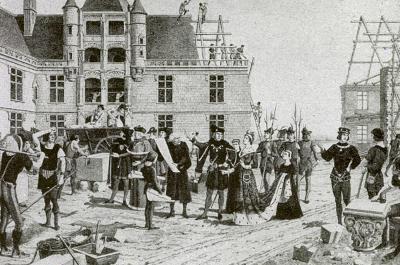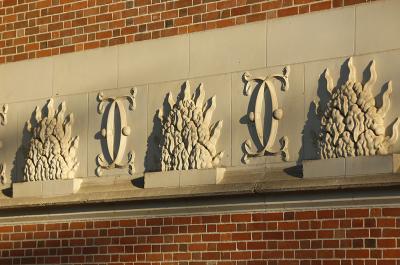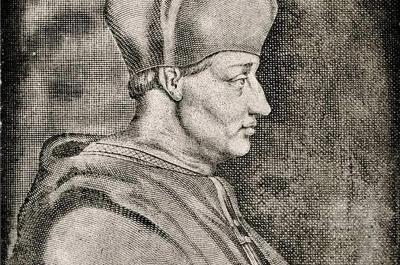The Château of Chaumont was founded around the year thousand by Odo I Count of Blois, to keep watch over the border between the county of Blois and the county of Anjou held by Fulk III Nerra.
The Norman knight Gelduin received Chaumont and shored up its fortress. His son and heir Geoffroy, with no child of his own, decided to pass it on to his great-niece Denise de Fougères, who married Sulpice I d’Amboise in 1054. The Château thus stayed in the d’Amboise family’s hands for five centuries.
In 1465, Louis XI had Chaumont burned to the ground to punish Pierre I d’Amboise, embroiled in the “League of Public Weal” (aristocratic revolt against the king). He was given back his land upon his return to favour.
Between 1468 and 1481, Pierre I d’Amboise and his son Charles I undertook a grand rebuilding of the château, demolished in 1465 on the orders of the king, Louis XI. Although the need for security was less of a factor than in earlier times, the two owners nevertheless included defensive features: a symbol of power and privilege. Sturdy towers, ditches, flanking tower, arrow slits and machicolations – all still visible today – show a fondness of the d’Amboise family for medieval forms.
During the second period of construction, undertaken between 1498 and 1511 by Charles II d’Amboise and Cardinal Georges d’Amboise, the use of architectural features imported from Italy testifies to the family's acceptance of "modern times". Sculptures with arabesques and shells, for example, are integrated into the gothic architecture. So, while Chaumont inherited elements of the castles of the previous generation, it also borrowed from a new repertoire.
The emblems of Charles II d’Amboise
The stages of construction of the Château can be distinguished by the evolution in architectural styles and the symbols carved into the stone by successive owners. Charles II had a frieze of interlaced "Cs" sculpted, alternating with a mountain in flames – a visual pun on "Chaumont" which could mean "Hot Mount". On the right-hand tower of the gatehouse, two savages are also bearing the d’Amboise coat of arms.
The emblems of Louis XII
The 1503 visit of Louis XII and his spouse Anne of Brittany is commemorated above the drawbridge by the sculpture of the French coat of arms, surrounded by a crowned "L" and a crowned "A". A porcupine was also added to the façade of the East Wing, in the Château's courtyard. Louis XII inherited this emblem from his father, Charles d’Orléans. At the time, it was believed that the animal not only used its quills to protect itself from predators but could also shoot them from distance.
A famous contemporary figure: The Chaumont-Amboise family
A real clan with many alliances, the Chaumont-Amboises feature prominently in France’s artistic and political history. Three of Charles I’s brothers left their mark among the builders and benefactors of their day: Louis, Bishop of Albi, provided his cathedral with a rood screen and chancel that are true masterpieces of flamboyant art; Pierre, Bishop of Poitiers, built Château de Dissay near his city; Jacques, Abbot of Cluny from 1485 to 1510, was one of the building contractors of Hôtel de Cluny in Paris, the present-day National Museum of the Middle Ages.
Special mention must be made of the lastborn of the brothers, Georges, high-ranking ecclesiastic, man of power and patron of the arts. He was born in Chaumont in 1460 and went on to gain the favour of Louis II of Orléans, the future Louis XII. Archbishop of Narbonne and then of Rouen, promoted cardinal in 1498 and Papal Legate in 1499, he became the new king’s “first minister”, bolstering his master’s popularity through his judicious administration.
The Amboises were leading lights in introducing Italian taste into the Kingdom of France. A taste whose vogue led an elite to draw inspiration from the much admired edifices on the other side of the Alps, and even bring over sculptors and ornamentalists. As a result, Georges d’Amboise built the Château (or Episcopal Palace) de Gaillon in Eure (Normandy) at the very beginning of the 17th century, so marking a turning point in the Italianising Renaissance of French architecture. Charles II d’Amboise, Charles I’s son and favourite of his uncle Georges, who appointed him Governor of Lombardy, Marshal and then Admiral of France, was the first Frenchman to notice Leonardo da Vinci, commissioning him to design a villa for his own use, along with a number of paintings for Louis XII (who appreciated his talents in that sphere). In 1507, he was responsible for getting the great artist to pay his first visit to France. Leonardo’s pupil, Andrea Solario, worked at Gaillon and painted the portrait of Charles II d’Amboise that now hangs in the Louvre Museum.



